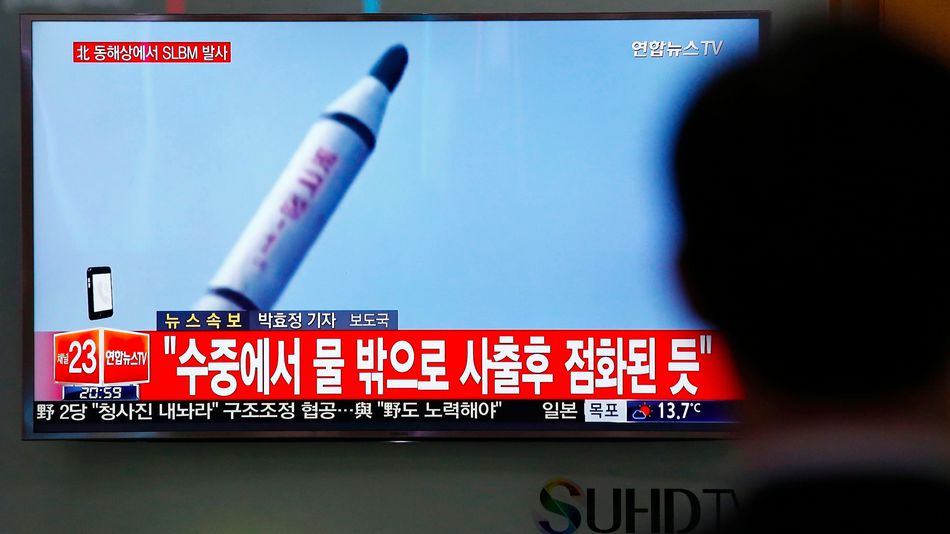Strengthening Sea-Based Nuclear Deterrence: North Korea Moving Towards Assured Second Strike Capability

In October 2019, North Korea confirmed that it was able to successfully test fire the Pukguksong-3 submarine-launched ballistic missile (SLBM). To be sure, North Korea is seemingly making strides in developing survivable nuclear forces, one in which this new SLBM plays a crucial component. Given the difficulties in detecting SLBMs, these delivery vehicles are arguably the most reliable leg of a nuclear deterrent force.
In the case of North Korea, the Pukguksong-3 provides the leverage of being able to fire nuclear capable missiles away from its territory with the ability to reach greater distances. The missile is a solid fuelled missile and hence, easier to launch and less hazardous; perfectly suited for a submarine launch. Thus it would provide North Korea with greater scope for causing lethality by improving the operational readiness of the missile system and a greater chance of operating during a crisis situation should deterrence fail.
However, amid these developments, it is also noteworthy to mention that North Korea’s submarines are diesel powered and not nuclear propelled. This means they are more susceptible to enemy detection. There is also concern whether the submarines would be capable of carrying the nuclear propelled SLBMs and whether they would be capable of carrying out patrols for longer distances. According to a New York Times Report, even the new submarine “will not be enough to make a round trip across the Pacific without surfacing and exposing itself to detection.”
However, North Korea could venture into developing ballistic missile submarines for launching its nuclear SLBMs. There is already a belief that the Gorae class submarine is nuclear powered. In due course, North Korea may decide to venture into air independent propulsion system submarines that have greater options of survivability compared to diesel powered submarines. Nevertheless, North Korea’s venture into sea-based nuclear deterrence gives it greater leverage in the Sea of Japan and also the capability of striking Hawaii with further technological developments.
There is a trend of North Korea test firing missile systems to express its angst and disappointment in negotiations and also as a tool for coercive diplomacy. This test occurred just days before the nuclear negotiation talks between North Korea and the United States was to resume. The previous efforts had not yielded any positive results and North Korea wants to make sure that its demands are well heard by the United States and also taken seriously. North Korea wants the United States to sign a peace treaty and supercede the armistice that exists since the Korean War. The United States wants to discuss the nuclear impasse first and then progress with other policies. What is more, North Korea also expects concessions in return for any steps towards denuclearisation, including the removal of sanctions imposed on it by the United Nations Security Council (UNSC).
In fact, previously, North Korea has also threatened to abandon any negotiation talks if there was no credible concessions and a flexibility shown by the United States. Such tests before nuclear negotiations are surely a way to strongarm the United States to normalise its relations with North Korea. In October 2019, North Korea also threatened to rollback on its commitment of not testing nuclear weapons and long range missiles. Since then, North Korea has been testing short range missile systems. This threat came from North Korea just days after it tested its SLBM. Of note, the test followed a US Minuteman III test which North Korea believed was conducted to exert pressure on it ahead of the negotiations.
To be certain, North Korea is fixed on the year-end deadline it has issued to the United States. Moving forward, North Korea will likely continue to take aggressive steps to encourage the United States to adopt increased flexibility and positions more amenable to Pyongyang. These may include long range missile tests.
Related posts:
Category: FOREIGN POLICY & SECURITY, SOUTH ASIA & ASIA PACIFIC

